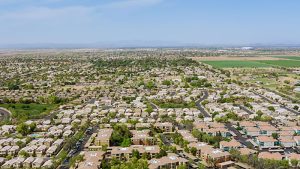The COVID-19 pandemic has forced most state and local governments (SLGs) to undergo rapid modernization. For many, modernization has meant adopting a new suite of software services to meet citizen needs as the government shifted to remote work and digital service delivery.
Maryland Gov. Larry Hogan announced that the state has appointed its first chief privacy officer and its first chief data officer.
The Federal Communications Commission (FCC) has allocated an additional $42 million in the second round of funding for its COVID-19 Telehealth Program, bringing the program total to $166 million in funding.
The General Services Administration’s (GSA) Technology Transformation Services (TTS) has selected 14 projects to receive funding from the American Rescue Plan Act of 2021 to develop government-wide citizen-facing services to help recover and rebuild from the COVID-19 pandemic.
The Federal Communications Commission (FCC) announced that it is ready to authorize nearly $709,060,159 in its fourth round of funding for new broadband deployments through the Rural Digital Opportunity Fund.
If you have experience in IT, you know that minor issues and anomalies in IT services can easily become a huge bottleneck for technicians. Without the right IT service desk technology, manual processing can bog down your resources and cause unnecessary waits for those needing help. As a result, end-user satisfaction will start to fall as people suffer through long hold queues and waste valuable work hours trying to resolve issues instead of focusing on their own projects. In this article, we will discuss three challenges faced by the IT service desk and how you can overcome them.
In a bid to make filing taxes a little bit easier, the city of Philadelphia has launched a new cloud-based tax system.
The pandemic created an instant and widespread need for better data sharing about infections and treatment, pushing states to revolutionize their healthcare IT and address new challenges with cutting-edge technology. For many states, the biggest key to success has been moving to the cloud.
With K-12 educational institutions increasingly targeted by ransomware and other cyber attacks during the coronavirus pandemic, the Government Accountability Office (GAO) is pushing the Department of Education to update its plans – which currently date from 2010 – for addressing cyber risks faced by schools.
Code for America has launched a new initiative to work with state and local governments (SLGs) to rebuild America’s safety net so that “government services are equitable, easy-to-use, and built for the digital age.”













